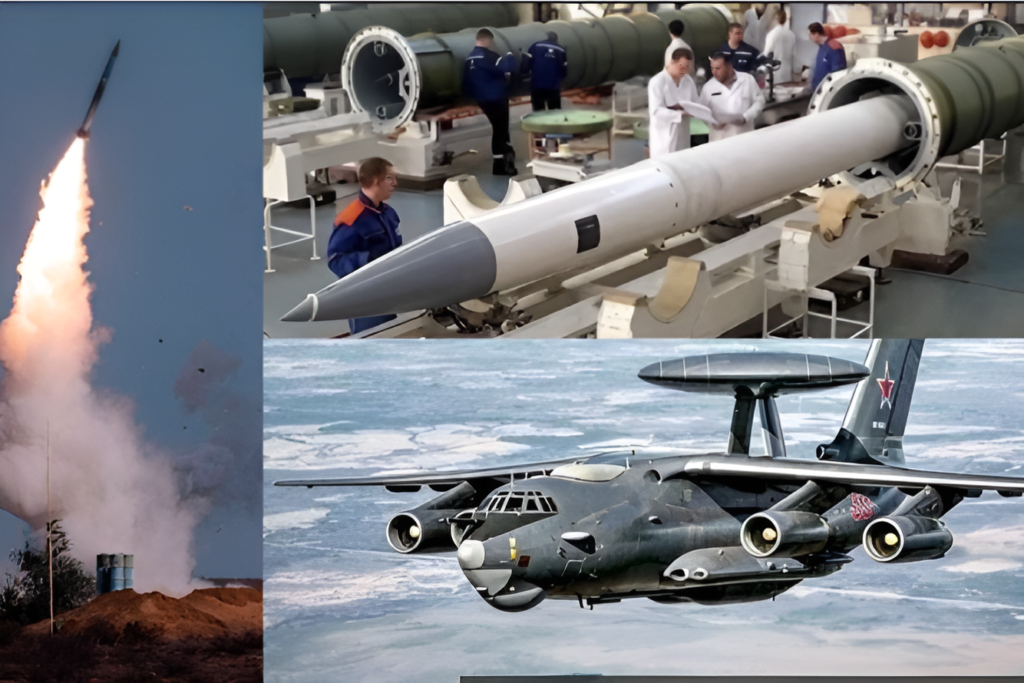
In early November, reports surfaced that the Russian Armed Forces had used the advanced S-400 long-range air defense system to fire its 40N6 missiles, marking a significant combat test of this missile in the Ukrainian theater. Paired with Russia’s A-50 airborne early warning and control (AEW&C) aircraft, the S-400 demonstrated its ability to track and neutralize low-altitude targets at extreme ranges of up to 400 kilometers. The use of this advanced system combined with an airborne sensor platform significantly increased the precision and effectiveness of the engagement.
The 40N6 missile is designed to engage targets at great distances and can intercept low-flying aircraft and cruise missiles, which would otherwise be difficult to target due to the Earth’s curvature. This missile’s unique trajectory, which involves ascending to near-space altitudes before descending to its target, gives it unparalleled over-the-horizon strike capabilities. It can engage targets as close as 5 meters from the ground, making it highly effective against low-altitude threats. Although fielded by the Russian Armed Forces since 2018 and delivered to China in 2019, this is the first confirmed combat use of the 40N6 missile, proving its effectiveness in real-world operations.
The pairing of the S-400 with the A-50 AEW&C aircraft further enhanced the targeting capability, as the A-50’s elevated position provided crucial situational awareness. This combination allowed the S-400 system to fire missiles at maximum range, targeting enemy aircraft at altitudes of around 1,000 meters. The A-50’s role in guiding the 40N6 missile demonstrated the growing synergy between Russia’s air defense and airborne early warning platforms, allowing for a new level of precision in countering high-value air targets such as bombers and tankers. Despite the relatively small number of A-50 aircraft in service, they remain an important part of Russia’s air defense network due to their superior radar capabilities, which are enhanced by Russia’s fighter jets, such as the MiG-31, which carry some of the largest radar systems in the world.
This combat success highlights Russia’s continuing strength in producing and deploying state-of-the-art air defense systems. Russian officials, including President Vladimir Putin, have boasted that Russia is producing surface-to-air missiles at a higher rate than any other country, surpassing NATO’s combined production capacity. This claim, while difficult to independently verify, is supported by the fact that Russia has been able to rapidly scale up production thanks to the opening of several major manufacturing facilities, such as the Obukhov Plant in St. Petersburg and the Avitek and NMP plants. These facilities are enabling the production of several new S-400 regiments annually, and production rates for the 40N6 missile alone are estimated to exceed 300 units per year.
The ongoing production of advanced air defense systems like the S-400 and the newer S-500 demonstrates Russia’s commitment to maintaining air superiority in the region. The S-400’s combination of mobility, long-range engagement, and the ability to provide a wide-area defense against tactical missile threats is a formidable tool for deterring enemy air forces. Meanwhile, the S-500, with its even greater engagement range of 600 kilometers, is pushing the boundaries of air defense technology, providing defensive capabilities against advanced threats such as intercontinental ballistic missiles, satellites, and hypersonic weapons.
As Russia’s production of these systems accelerates, the integration of 40N6 missiles across its S-400 divisions is expected to exceed 60 regiments by 2027-28. This further highlights the strategic importance of air defense assets to Russia’s military doctrine, especially given the nation’s long-standing emphasis on acquiring ground-based air defense systems over tactical combat aviation. The rapid growth of these capabilities poses a growing challenge to NATO and other potential adversaries, particularly in regions like Eastern Europe and the Pacific, where Russia’s air defense systems provide a powerful deterrent against foreign aircraft and missiles.
The S-400’s continued development, paired with Russia’s growing air defense production capabilities, indicates a shift in the global balance of power in air defense technology. As Russian forces continue to integrate these systems, the ability to control vast swaths of airspace and neutralize high-value targets at unprecedented ranges will reshape the way future conflicts are fought.




